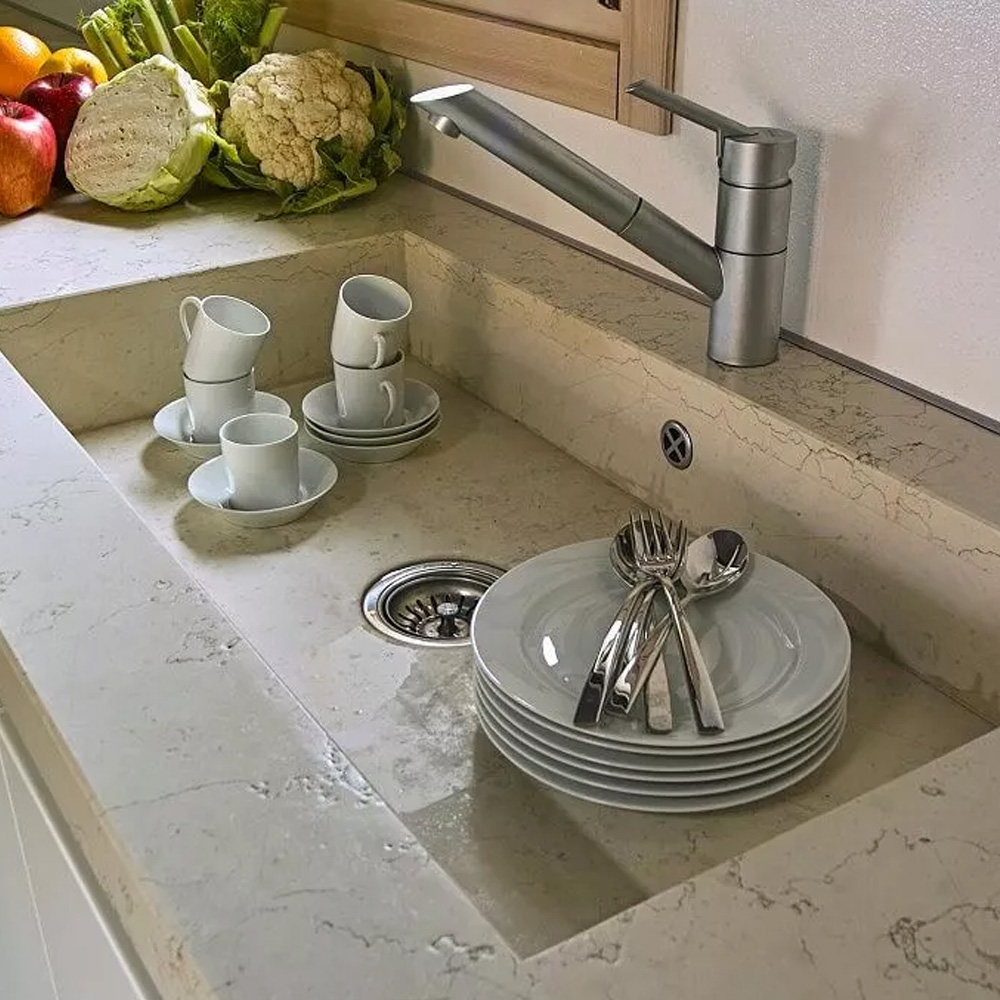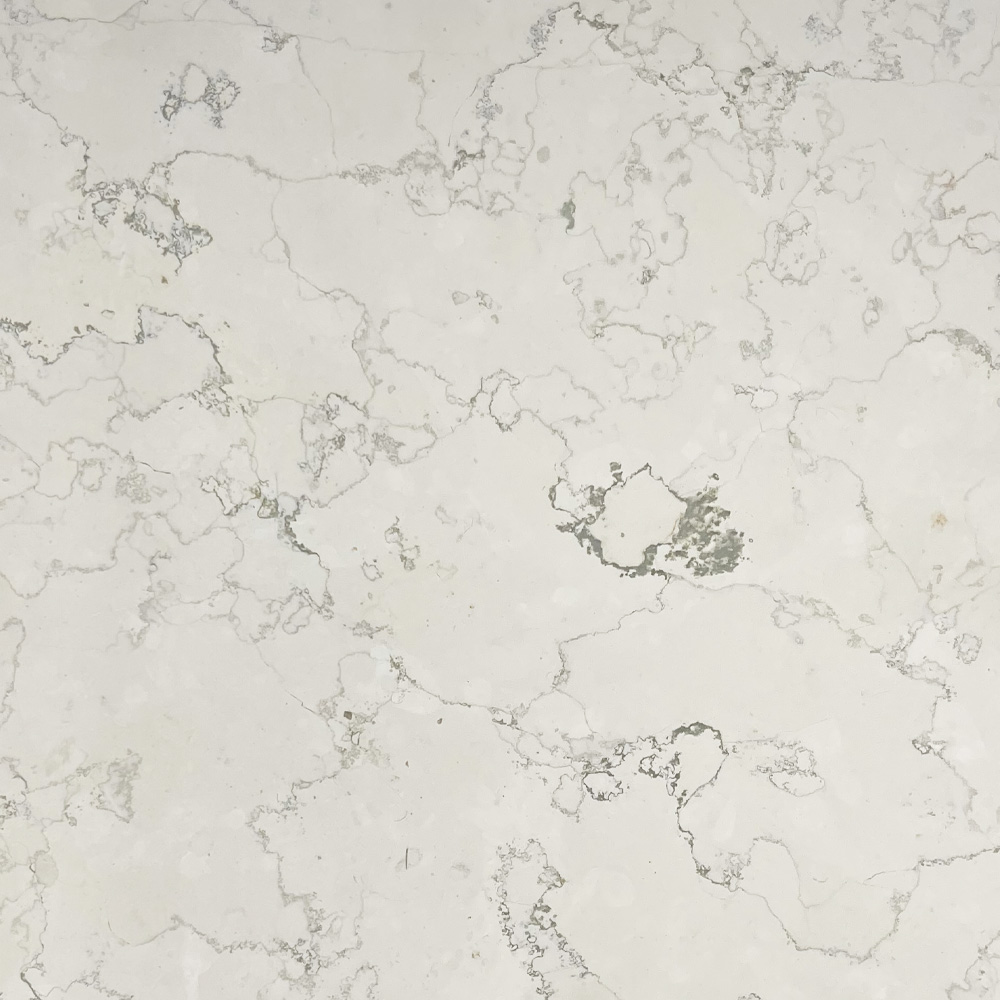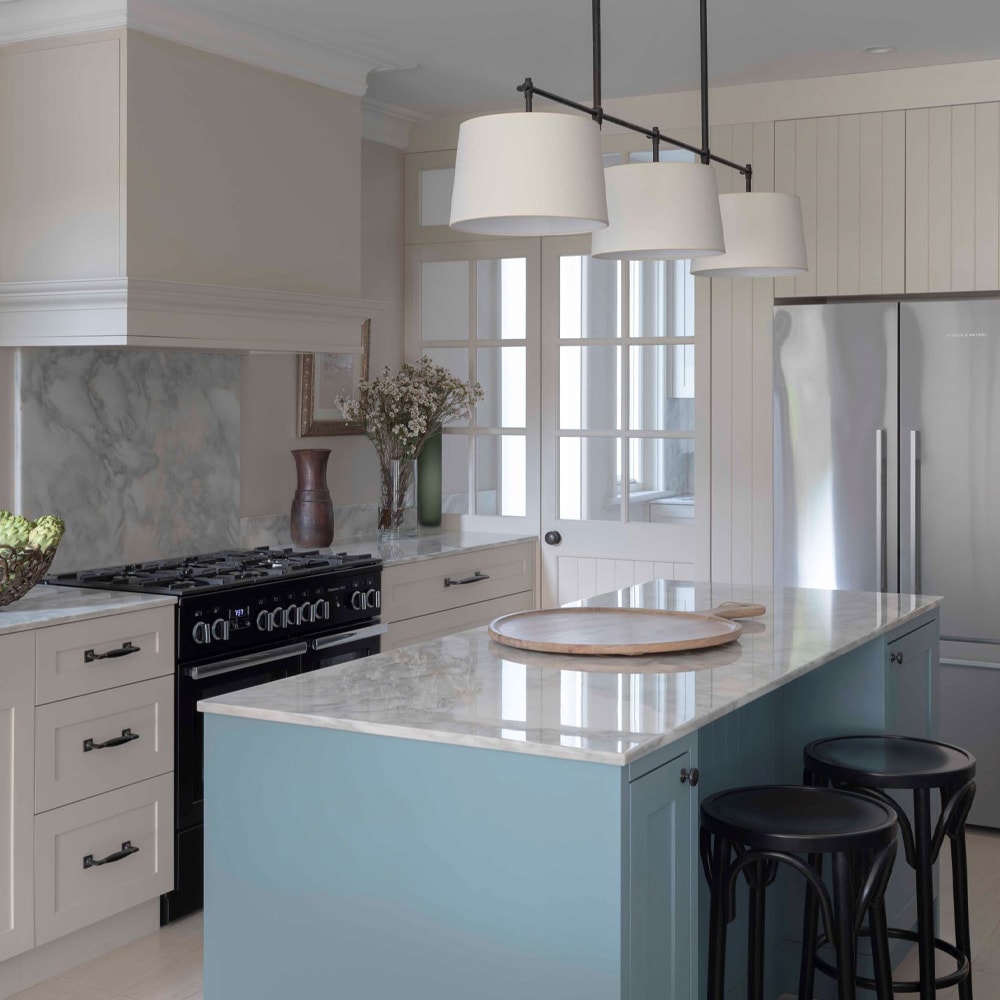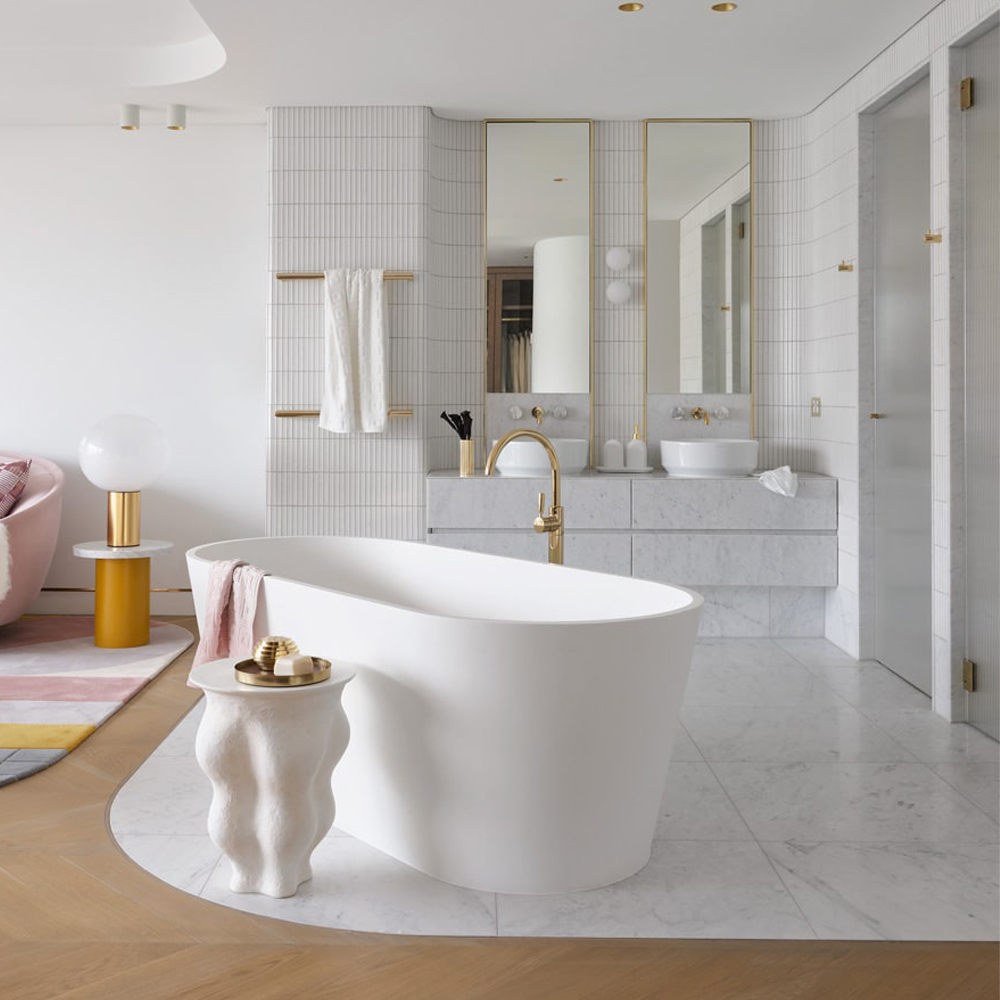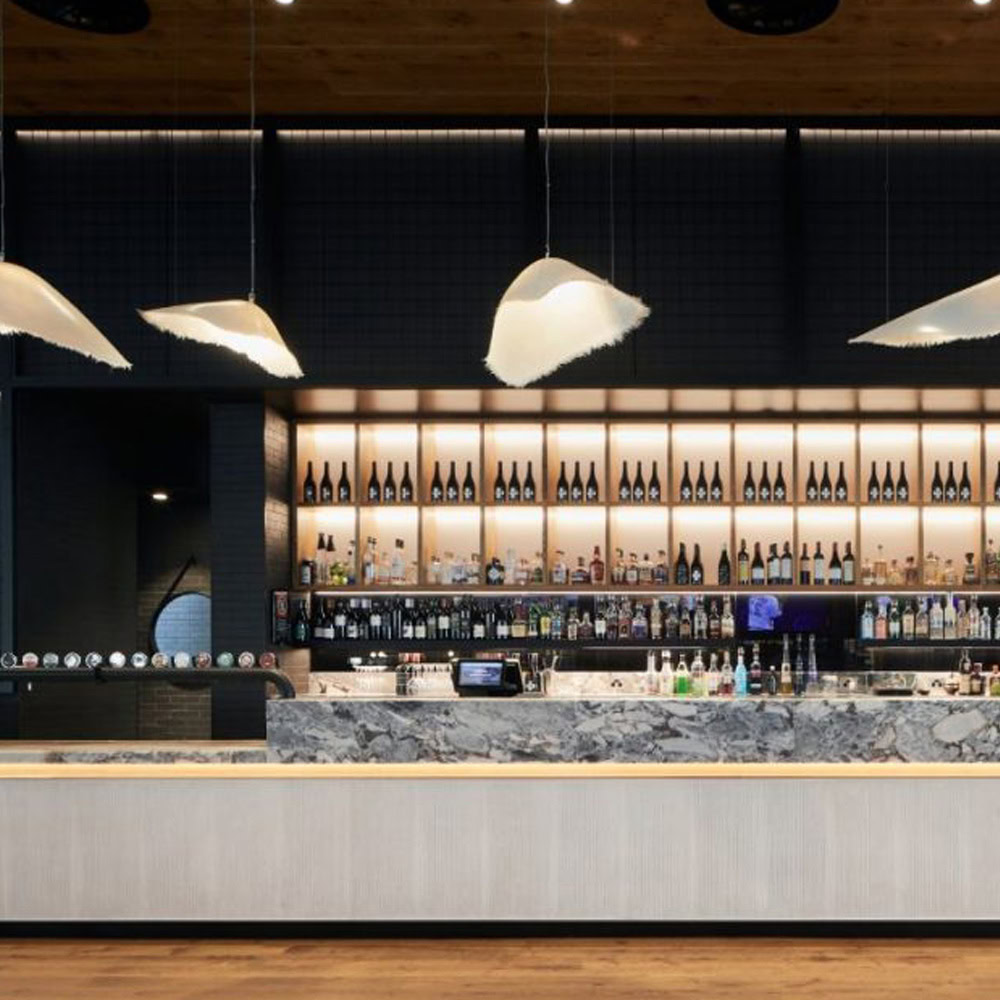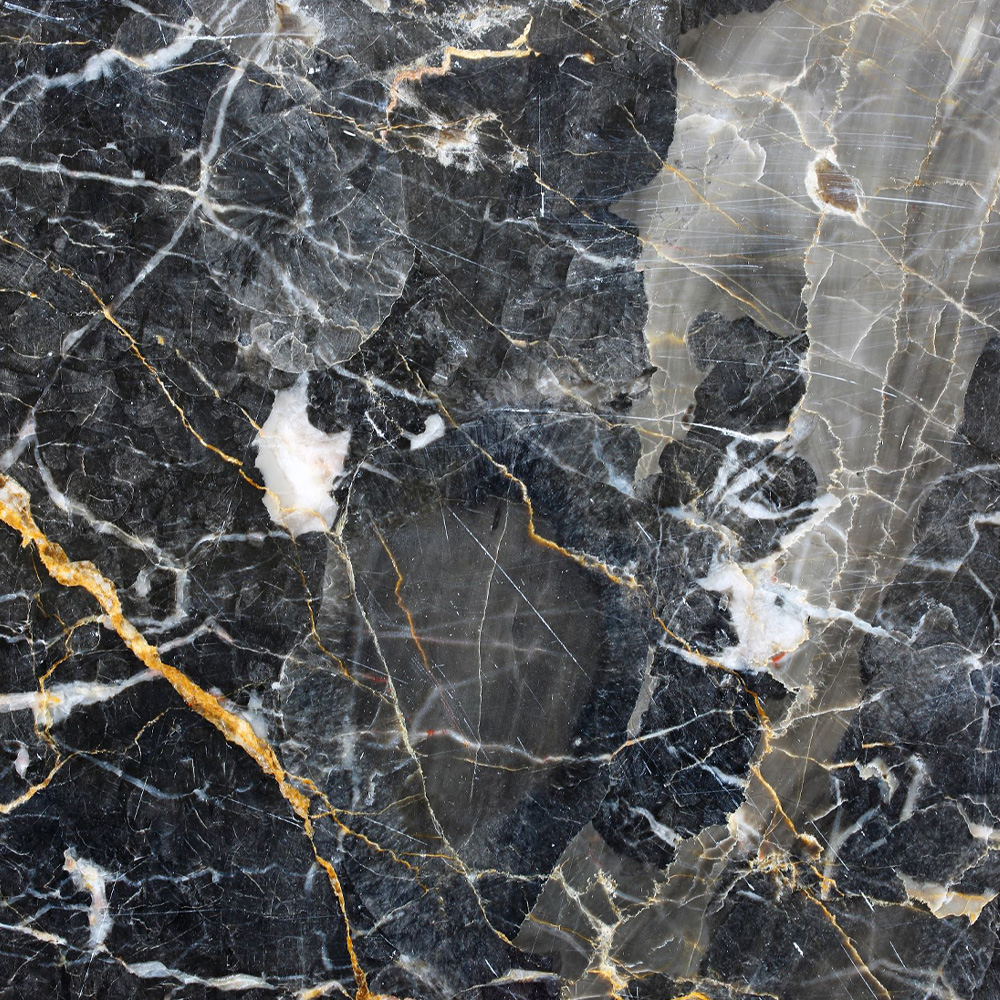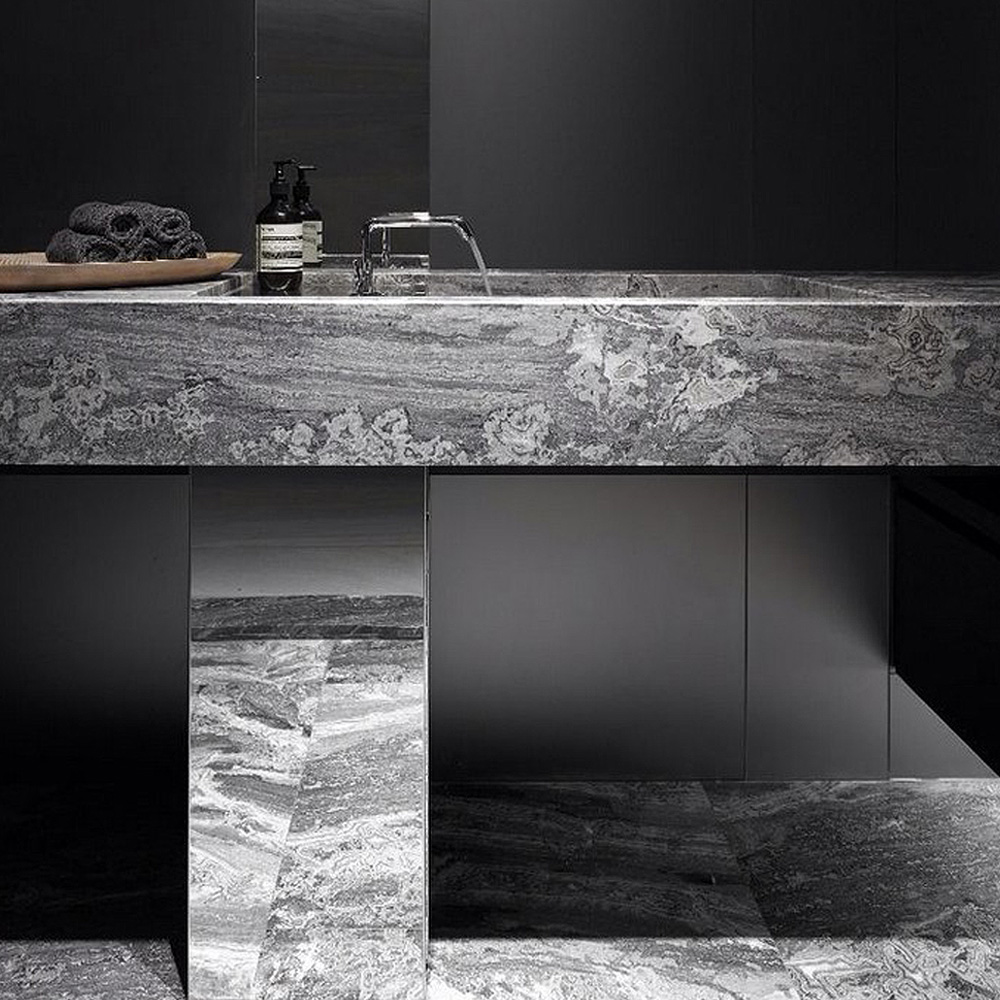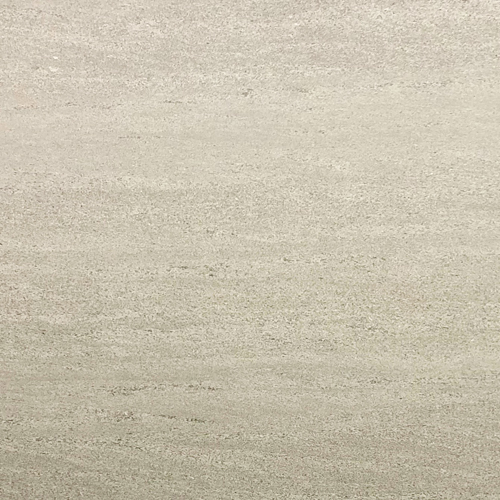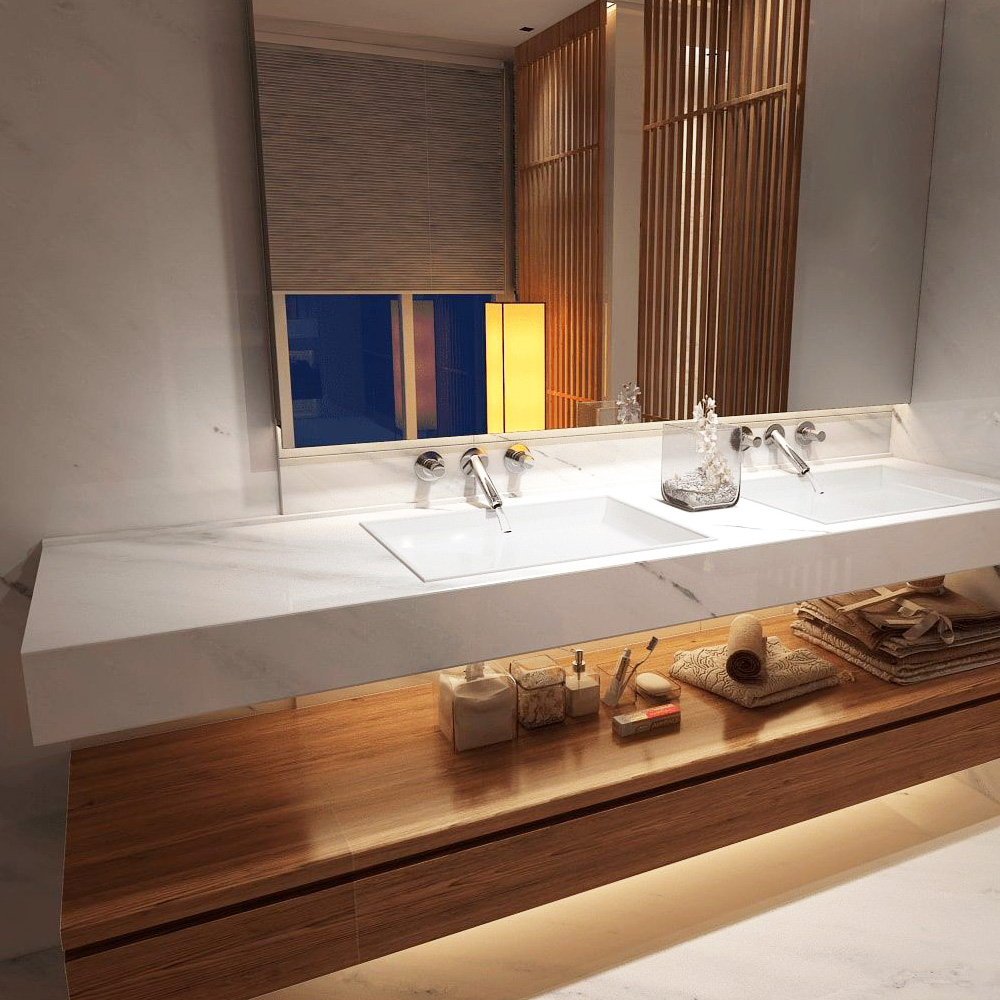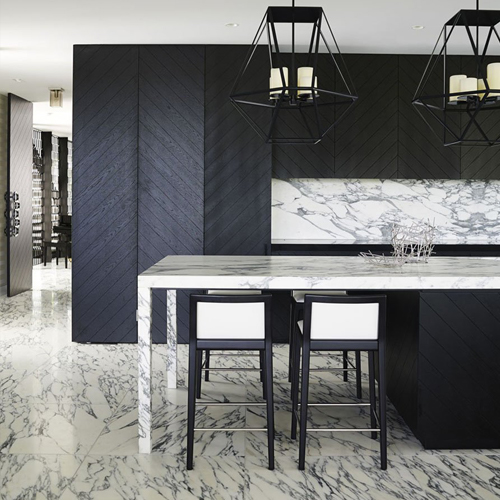Bianco Perlino Marble Comes In Different Shades and Veining
As a sedimentary calcite marble, Bianco Perlino forms beneath the surface of the Earth. There, limestone rock is subjected to extreme heat, pressure, and other geologic forces over immense periods of time. The sediment then crystallises, forming marble.
In the case of Bianco Perlino, due to the relative lack of impurities in the limestone, this produces an exquisite cream marble that is considered highly versatile.
These have veins that are found throughout slabs with concentrations and wider fields of base stone giving texture to the material. Veins are typically grey or dark ivory in shade.
While most slabs of Bianco Perlino will feature base stone that is pale ivory to buttery in colour, shades range from paler, icy white to beige tones. Veining can vary too with some slabs featuring warmer tones and patterning that blends into the base stone.
The Many Uses of Bianco Perlino Marble
Thanks to its pure aesthetic, Bianco Perlino manages to tick every box when it comes to marble usage. While the marble does feature strong veins, adding subtle texture, these are not ribboned or pooled, meaning the stone lends itself to outdoor and countertop use as well as decorative purposes.
Indoor Applications
Within a property, introducing Bianco Perlino is possible in every room. Thanks to its paler hue, the marble opens spaces up, introducing light and air into the setting.
Kitchen countertop: As a work surface, Bianco Perlino offers warmth and rustic charm without being busy. The generous but delicate veining adds diversity to the surface while the large swathes of crystallised calcite make the stone hardy enough for general usage. The stone works well with oak and modern-style kitchen decor.
Splashback: complementing the countertop with a Bianco Perlino splashback is a popular choice to maximise light reflectivity. This makes narrow kitchens feel wider and spacious kitchens feel palatial.
Flooring: Bianco Perlino works especially well as a floor surface being simple enough in natural design to cover an entire room. As a calcite marble stone, tiles can be expected to maintain its appearance for moderate to high usage without signs of compression. As the stone is lighter in its appearance, age marks will also be less visible.
Bathroom: within a bathroom, Bianco Perlino creates a clean and harmonious setting with the stone used as flooring, wall cladding, bespoke sinks, and shower walls. The stone’s softer veining means it can be used extensively throughout a bathroom without the need for other materials but does pair nicely with pure white marble and porcelain.
Outdoor Use
Outdoors, Bianco Perlino also shines, finding itself an ideal material for flooring and cladding.
Tiles: the stone makes a perfect tile especially with cross-cut slabs letting veining be showcased. These are perfect for poolsides or on exterior walls where Bianco Perlino’s more neutral shades let it blend in with outdoor environments.
Pavers: for larger areas, Bianco Perlino can also work as a paver. These allow patio areas and walkways to appear contemporary but retain a natural element. Additional grip can be introduced With finishing techniques allowing the vein texture to become exposed.
Maintaining Your Bianco Perlino Marble
As a lighter marble, Bianco Perlino is one of the easier stones to look after. Due care and proper maintenance should be undertaken, however, to keep your marble looking its very best.
Avoid acids making contact with your marble. Chopping foods such as tomatoes or citric fruits can cause etching to appear over time. This can be exacerbated by acid-based cleaning solutions.
Instead, simply clean your marble with gentle soaps using a soft cloth and wiping motion. Marble does not require abrasion to clean, so avoid scrubbing and using hard brushes on the surface.
You should also tend to spillages immediately to avoid stains from forming. These can occur from oils and liquids such as wine. Use a dry cloth to mop up spills straight away and use a solution made from 12% hydrogen peroxide and a few drops of ammonia if staining does occur. Simply apply this and leave for fifteen minutes before wiping away and cleaning. Reapply if staining persists.
You can help protect your marble by sealing it every six months. This easy procedure involves applying a sealant to make the stone less porous, acting as a barrier for liquids and oils.
Also known as Bianco Perlino Marble, Blanco Perlino, Perlino Blanco Marble, Bianco Perlino Cremo, Bianco Perlino Creama

